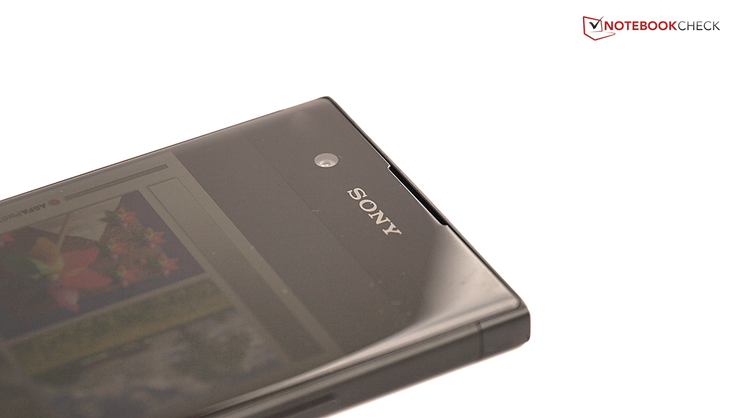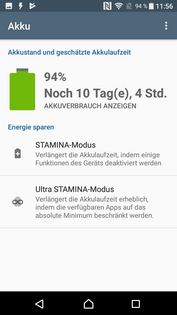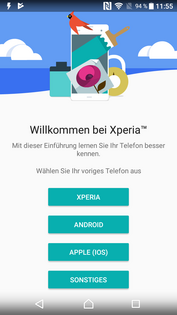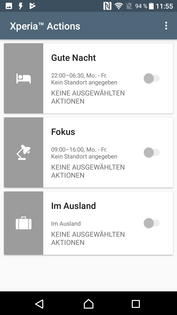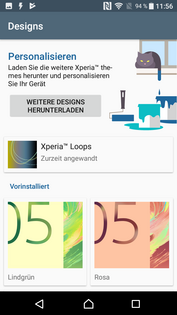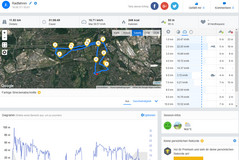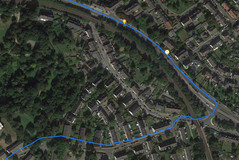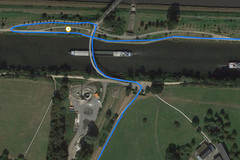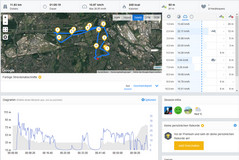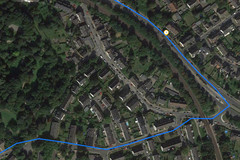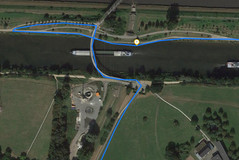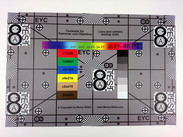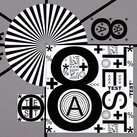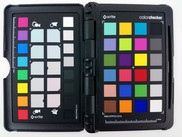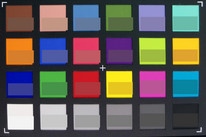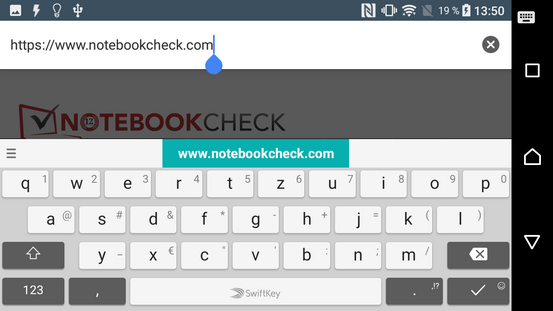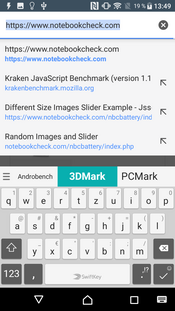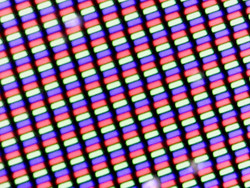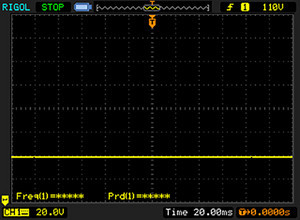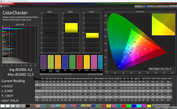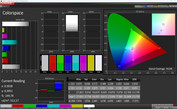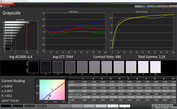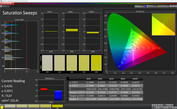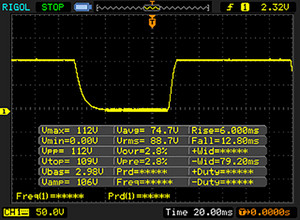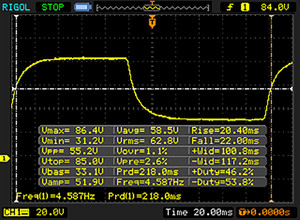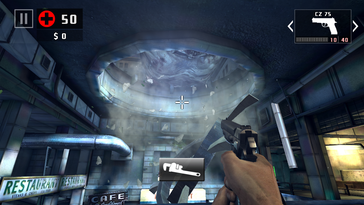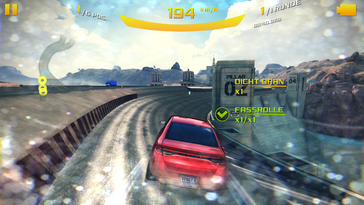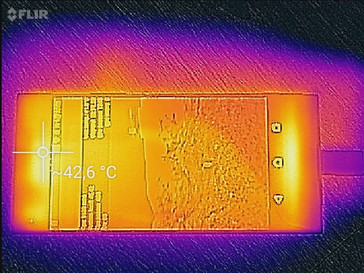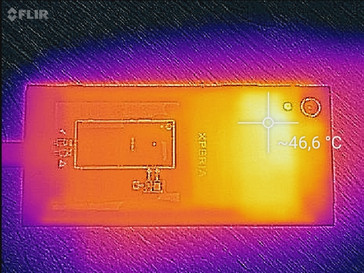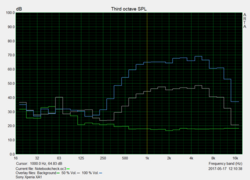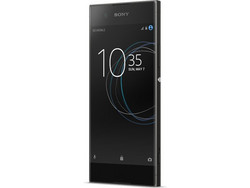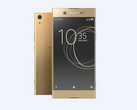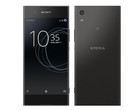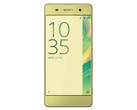Sony Xperia XA1 Smartphone Review
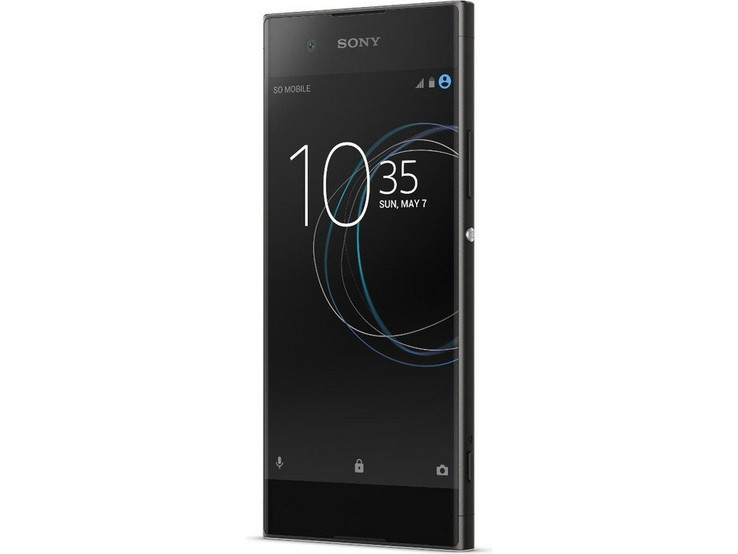
For the original German review, see here.
Sony takes a risk: Instead of copying the design philosophy from Samsung and Apple like many other manufacturers, the Japanese smartphone-builder prefers to create its own style. The virtually edgeless design of last year's Sony Xperia XA pleased us, and it is even a bit more autonomous this year. Sony's Xperia XA1 that we are now testing has a very long but also very slim shape. This looks elegant, but Sony naturally wants to convince with other features: Quick Charge, LTE Cat.7, and a low weight are to also contribute to its success. High-resolution cameras on the front and rear are almost a must - after all, Sony is one of the major developers of mobile camera modules.
The Xperia XA1 is situated in the mid-range at around 270 Euros (~$306). Here, we find many competitors, for example, Lenovo's Moto G5 Plus or Huawei's P10 Lite. Honor's 6X is also an interesting mid-range device that wants to convince with a good price-performance ratio. Let's find out whether our review sample can keep up with them.
Case
The more angular design of Sony's Xperia XA1 is very daring and contrasts the continuously decreasing edge of Apple's iPhone and Samsung's gently curved Galaxy smartphones. We welcome that someone suggests a different design language, especially since the Xperia XA1 presents nice and also very unusual proportions. The 16:9 screen and the extremely narrow lateral edges around the display let the smartphone look very slim but also relatively tall. The lightly backward-curved glass on the corners even adds to the already very stylish impression. The height of 8 millimeters is average; bulkier and also slimmer smartphones exist in the mid-range.
The corners are more eye-catching than in other smartphones, but they are still lightly curved. Thus, Sony's Xperia XA1 is pleasant to hold. The narrow shape is an advantage for small hands. The device is also stable. Pressure on the back is not passed on to the screen. Strong pressure on the front causes minor wave formations in the liquid crystals that are, however, only visible when looking closer. The smartphone can be warped slightly and also produces quiet cracking noises then. This is the only point that slightly reduces the high-quality overall impression.
Users who find black boring can select another available color: white, gold or pink.
Connectivity
As for memory configuration, Sony installs more GB in terms of RAM and storage device into its smartphone than in the predecessor. Sony's Xperia XA1 has 32 GB of storage and 3 GB of working memory. This is also desperately needed seeing that it has become standard in the mid-range. Huawei's P10 Lite even has 4 GB of RAM. The storage can be expanded via a micro-SD card. Cards with up to 256 GB are supported. The micro-SD can be formatted as internal storage and apps can be moved to the card.
A dual-SIM variant of Sony's Xperia XA1 exists. However, it is not officially offered in Central Europe. Thus, the LTE 20 band (800 MHz) that is important in Germany is not supported. This is still tolerable in cities but an LTE network will perhaps not be found in rural areas, depending on the network provider. It is too bad that Sony does not offer its dual-SIM smartphones globally. Many manufacturers, such as OnePlus, have won over many fans with this.
The smartphone has a USB-C port that, however, only operates at USB 2.0 speeds. At least it supports USB OTG. NFC for wireless near field communication is also installed in the Xperia XA1.
Software
Sony obediently follows Google's design specifications for Android and implements the flat material design quite consistently. The many graphics in Sony's modified Android 7 are also designed correspondingly and pep up the often slightly text-heavy operating system. The home screen with a relatively small clock widget might look a bit cramped in delivery state. However, it becomes more straightforward after cleaning up. The security patches are dated April 7, 2017, which is not quite up-to-date at test time. Sony is known for software tweaks to improve many functions in the operating system. There is an option for image optimization and audio can be adapted extensively. The smartphone observes the user's habits and provides corresponding tips for better utilization. This functions even better when it is registered for Xperia services.
Sony also preloads some proprietary apps, such as a music player, a gallery app and video software. The PlayStation app and its own app store dubbed "What's New" are just as available as the Xperia Lounge. The user can enjoy exclusive prize games and advantages when the Xperia XA1 is registered here. The media apps plus corresponding Google apps that are, of course, also preloaded are annoying. Sony's own virus scanner and some other apps also halve the storage. Fans of a clean Android will have to uninstall a lot of apps.
Communication and GPS
LTE Cat.7 along with seven supported bands, and four GSM and four UMTS frequencies is a good configuration in the mid-range. Lenovo's Moto G5 Plus is even a more global-phone: It supports considerably more LTE frequencies. It is probably better to stay within Europe with the Xperia XA1 for ensuring reception. There should be no issues here. The reception in the well-developed German Vodafone network in cities was also good indoors. We usually achieved 3/4 of the signal strength here.
Fast 802.11 ac Wi-Fi is not supported, but only Huawei's P10 Lite is capable of this standard among the comparison devices. Otherwise, the Xperia XA1 supports all up-to-date Wi-Fi standards and also communicates in the less frequented 5 GHz range. We achieved decent transmission rates in our standardized Wi-Fi test with the Linksys EA8500. Websites opened quickly near the router and the full signal was displayed. Pages opened much slower at a distance of 10 meters and through three walls. Only half the signal was received here.
| Networking | |
| iperf3 transmit AX12 | |
| Huawei P10 Lite | |
| Sony Xperia XA1 | |
| Lenovo Moto G5 Plus | |
| Honor 6X | |
| iperf3 receive AX12 | |
| Huawei P10 Lite | |
| Lenovo Moto G5 Plus | |
| Sony Xperia XA1 | |
| Honor 6X | |
The Xperia XA1 easily found us indoors, and its accuracy of up to six meters is not bad at all. The signal was much stronger outdoors and we were located with an accuracy of up to two meters. This is a good rate.
But is the GPS module in the Xperia XA1 also convincing in practice? We put the smartphone in a backpack alongside Garmin's Edge 500 professional navigation system and went for a bike ride. The logged route is compared with Runtastic. A difference of just 100 meters on a measured route of almost 12 kilometers is not bad. The Xperia XA1 does not trace the route as precisely as the professional navigation system, but the accuracy is nevertheless impressive for a smartphone and definitely sufficient for free-time use.
Telephony and Call Quality
Sony does not modify the phone app and uses Google's stock app. This is absolutely okay since the Android phone app has many features and arranges them neatly in tabs. However, the keypad can only be opened by tapping the always visible dial icon.
The calling sound quality is one of Sony's expert fields, and the Xperia XA1 is largely convincing here. The contact is clearly intelligible, but the earpiece distorts slightly at maximum volume. The sound seemed even a bit clearer with the "Clear Audio Plus" audio improvement that can be enabled in the settings. The microphone does a decent job, but its sound is not quite clean: Loud voices cause audible, minor distortions and a slight hum. The call quality is absolutely satisfactory for everyday use, but it is not awesome.
Cameras
The cameras are also a field where Sony is virtually forced to deliver good results. After all, it is the biggest mobile camera manufacturer in the world. Sony is not stingy and installs a 23-megapixel camera on the rear and an 8-megapixel camera on the front of the Xperia XA1. The primary camera has a hybrid autofocus that combines the phase comparison and contrast method to focus even faster. The primary camera also features a 24-mm wide angle lens and an LED flash. The ISO sensitivity can be increased up to 6400, which is to allow taking good photos even in dark scenarios. It is good that Sony installs a physical camera button.
But what do the photos made with the camera that has a very high resolution for the mid-range look like? In fact, the wide angle lens has an impact: Compared with the standard lens in LG's G6 (this device also has a wide angle lens), a much bigger image section is captured. We find the dynamics in low light a bit too low; hardly any details are visible here. We noticed some strange distortions that almost look like blurred movement in the very left photo area. At first glance, the camera's reproduction can throughout compete with a high-end device like LG's G6. However, the photos of LG's G6 look a bit sharper and more accurately exposed in our zoomed details. The color reproduction of Sony's Xperia XA1 looks quite neutral. The camera in Sony's Xperia XA1 has its moment of fame in low-light situations: It brightens the scenario very well - even more than the camera in LG's G6. Although the photos exhibit a heavy color noise, it can hardly be prevented in such low light and is also visible in photos made with the reflex camera.
The primary camera only records videos in 1080p. However, a 4K video encoder is installed in the SoC. Sony likely reserves this feature for its premium-range devices. The videos still look relatively sharp, and the exposure adapts quite fast and suitably for the scenario. However, it also lacks a bit of dynamics in dark surroundings.
The front camera takes photos in a resolution of 8 megapixels, and it also features a wide angle lens. The color reproduction is quite cool, but the photos look relatively sharp otherwise. The dynamics is again a bit too low in dark surroundings. The front camera also records videos in 1080p, and movement is smooth and the exposure is adapted well. The too low dynamics issue in dark environments continues here, as well.
We additionally test the primary camera under defined light conditions in the lab. Here, the primary camera's very high sharpness becomes especially visible. This high sharpness is even maintained when zooming the details. Strangely, the lateral blurriness is not seen here. However, the "lack of dynamics issue" is again obvious with black text on a brown background. Otherwise, the primary camera delivers an excellent outcome in terms of sharpness. Unfortunately, the color reproduction is a bit distorted; colored areas also look patchy.
Accessories and Warranty
A charger and USB C cable are included. It is too bad that this combination does not allow quick-charging although the device supports the Pump Express technology. A dedicated quick charger for which Sony demands a high 50 Euros (~$56) is available. A cover with a kickstand is also offered for almost 40 Euros (~$45). A headset is in the box.
Sony offers a 24-month warranty for its Xperia XA1 in Central Europe. Please see our Guarantees, Return policies and Warranties FAQ for country-specific information.
Input Devices and Handling
Sony preloads the Swift Key keyboard. The keyboard is clearly arranged and offers diverse input and setting options. However, the keys' double assignment can sometimes make things a bit confusing. Users who prefer Google's GBoard or another keyboard will have to install it from Google's Play Store.
The touchscreen is still very sensitive in the corners and is really pleasant to use. The touchscreen's sleek surface allows the finger to glide well. Diverse input aids for users with disabilities can be enabled but special gesture or movement controls are absent. In return, Xperia Actions that, for example, mute the phone at a specified time and place can be defined. Thus, the user can define a do not disturb time for the night.
Display
With a resolution of 1280x720 pixels, the Xperia XA1 lags behind its rivals that already have Full HD screens. The reproduction on the 5-inch screen nevertheless looks quite sharp; single pixels are not visible. The XA1 is on category level with an average brightness of 499 cd/m², but there are two corners that are not illuminated well. The smartphone has a minimum brightness of 37.83 cd/m², which is a relatively high rate and also has an impact on the black value as we will see in a moment. The illumination of 92% is still good and we did not see brightness differences with the naked eye.
| |||||||||||||||||||||||||
Brightness Distribution: 92 %
Center on Battery: 522 cd/m²
Contrast: 705:1 (Black: 0.74 cd/m²)
ΔE ColorChecker Calman: 4.2 | ∀{0.5-29.43 Ø4.77}
ΔE Greyscale Calman: 6.4 | ∀{0.09-98 Ø5}
Gamma: 2.18
CCT: 7044 K
| Sony Xperia XA1 IPS, 1280x720, 5" | Sony Xperia XA IPS, 1280x720, 5" | Lenovo Moto G5 Plus IPS, 1920x1080, 5.2" | Huawei P10 Lite IPS, 1920x1080, 5.2" | Honor 6X IPS, 1920x1080, 5.5" | |
|---|---|---|---|---|---|
| Screen | -6% | 19% | 20% | 10% | |
| Brightness middle (cd/m²) | 522 | 518 -1% | 503 -4% | 507 -3% | 547 5% |
| Brightness (cd/m²) | 499 | 475 -5% | 495 -1% | 509 2% | 540 8% |
| Brightness Distribution (%) | 92 | 81 -12% | 96 4% | 95 3% | 94 2% |
| Black Level * (cd/m²) | 0.74 | 0.61 18% | 0.31 58% | 0.36 51% | 0.57 23% |
| Contrast (:1) | 705 | 849 20% | 1623 130% | 1408 100% | 960 36% |
| Colorchecker dE 2000 * | 4.2 | 6.8 -62% | 6.2 -48% | 5.1 -21% | 5.1 -21% |
| Colorchecker dE 2000 max. * | 11.5 | 11.4 1% | 9.8 15% | 9 22% | 9.1 21% |
| Greyscale dE 2000 * | 6.4 | 7 -9% | 6.8 -6% | 6.1 5% | 6.2 3% |
| Gamma | 2.18 101% | 2.35 94% | 2.33 94% | 2.28 96% | 2.09 105% |
| CCT | 7044 92% | 8151 80% | 8113 80% | 8143 80% | 6546 99% |
* ... smaller is better
Screen Flickering / PWM (Pulse-Width Modulation)
| Screen flickering / PWM not detected | |||
In comparison: 53 % of all tested devices do not use PWM to dim the display. If PWM was detected, an average of 8088 (minimum: 5 - maximum: 343500) Hz was measured. | |||
The black level of 0.74 cd/m² is not exactly awesome. Dark areas sometimes look more like dark gray rather than black. The contrast of 705:1 is on an acceptable level, but the rivals are still much better.
Content looks relatively sharp and can be adapted via image optimization and manual white balance. The colors have an average deviation from the sRGB color space reference value. We determine this in our tests with a spectrophotometer and CalMAN software. Furthermore, a distinct violet tint is visible, especially in the bright grayscale. Although the color-space coverage is only an approximation due to the inaccurate measurement in CalMAN, 93% makes it evident that the sRGB color-space coverage is presumably quite high. The color reproduction looks quite accurate to the naked eye.
Display Response Times
| ↔ Response Time Black to White | ||
|---|---|---|
| 18.8 ms ... rise ↗ and fall ↘ combined | ↗ 6 ms rise | |
| ↘ 12.8 ms fall | ||
| The screen shows good response rates in our tests, but may be too slow for competitive gamers. In comparison, all tested devices range from 0.1 (minimum) to 240 (maximum) ms. » 40 % of all devices are better. This means that the measured response time is similar to the average of all tested devices (20.2 ms). | ||
| ↔ Response Time 50% Grey to 80% Grey | ||
| 42.4 ms ... rise ↗ and fall ↘ combined | ↗ 20.4 ms rise | |
| ↘ 22 ms fall | ||
| The screen shows slow response rates in our tests and will be unsatisfactory for gamers. In comparison, all tested devices range from 0.165 (minimum) to 636 (maximum) ms. » 69 % of all devices are better. This means that the measured response time is worse than the average of all tested devices (31.6 ms). | ||
Sony's Xperia XA1 can be used well outdoors thanks to the maximum brightness. Shade is only needed in direct sunlight or on very bright days.
We barely noticed brightness or color deviations with the naked eye when we tilted the smartphone's screen. However, the screenshots show that there are both color and brightness differences. The image can, however, still be recognized well even from very flat angles.
Performance
Although the MediaTek Helio P20 MT6757 is not a brand-new SoC anymore, it has been on the market for one-and-a-half years now, Sony's Xperia XA1 is the first smartphone with which we can test the SoC. The processor part has eight cores that clock at up to 2.3 GHz. The Xperia XA1 accomplishes performance rates that are on the category level. However, Lenovo's Moto G5 Plus, for example, is faster. This difference will unlikely be noticed in everyday use. It was possible to use the smartphone smoothly and we did not have any performance problems with the apps that we tested.
An ARM Mali-T880 MP2 graphics card is installed. It consists of two cores that can clock at up to 900 MHz. The Xperia XA1 is on par with the fast Lenovo Moto G5 Plus here and is also much faster than the other comparison devices. Compared with its predecessor, the performance plus is also significant. The screen's low resolution in conjunction with the powerful graphics unit is a well-chosen combination here.
| AnTuTu v6 - Total Score (sort by value) | |
| Sony Xperia XA1 | |
| Sony Xperia XA | |
| Lenovo Moto G5 Plus | |
| Huawei P10 Lite | |
| Honor 6X | |
| GFXBench (DX / GLBenchmark) 2.7 | |
| T-Rex Onscreen (sort by value) | |
| Sony Xperia XA1 | |
| Sony Xperia XA | |
| Lenovo Moto G5 Plus | |
| Huawei P10 Lite | |
| Honor 6X | |
| 1920x1080 T-Rex Offscreen (sort by value) | |
| Sony Xperia XA1 | |
| Sony Xperia XA | |
| Lenovo Moto G5 Plus | |
| Huawei P10 Lite | |
| Honor 6X | |
| GFXBench 3.0 | |
| on screen Manhattan Onscreen OGL (sort by value) | |
| Sony Xperia XA1 | |
| Sony Xperia XA | |
| Lenovo Moto G5 Plus | |
| Huawei P10 Lite | |
| Honor 6X | |
| 1920x1080 1080p Manhattan Offscreen (sort by value) | |
| Sony Xperia XA1 | |
| Sony Xperia XA | |
| Lenovo Moto G5 Plus | |
| Huawei P10 Lite | |
| Honor 6X | |
| GFXBench 3.1 | |
| on screen Manhattan ES 3.1 Onscreen (sort by value) | |
| Sony Xperia XA1 | |
| Sony Xperia XA | |
| Lenovo Moto G5 Plus | |
| Huawei P10 Lite | |
| Honor 6X | |
| 1920x1080 Manhattan ES 3.1 Offscreen (sort by value) | |
| Sony Xperia XA1 | |
| Sony Xperia XA | |
| Lenovo Moto G5 Plus | |
| Huawei P10 Lite | |
| Honor 6X | |
| PCMark for Android - Work performance score (sort by value) | |
| Sony Xperia XA1 | |
| Sony Xperia XA | |
| Lenovo Moto G5 Plus | |
| Huawei P10 Lite | |
| Honor 6X | |
| Geekbench 4.4 | |
| 64 Bit Single-Core Score (sort by value) | |
| Sony Xperia XA1 | |
| Lenovo Moto G5 Plus | |
| Huawei P10 Lite | |
| 64 Bit Multi-Core Score (sort by value) | |
| Sony Xperia XA1 | |
| Lenovo Moto G5 Plus | |
| Huawei P10 Lite | |
| Compute RenderScript Score (sort by value) | |
| Sony Xperia XA1 | |
| Lenovo Moto G5 Plus | |
Sony's Xperia XA1 is also on the expected category level in the browser benchmarks but cannot stand out positively. HTML 5 websites are usually rendered smoothly, but occasional stutters are unavoidable.
| Octane V2 - Total Score (sort by value) | |
| Sony Xperia XA1 | |
| Sony Xperia XA | |
| Lenovo Moto G5 Plus | |
| Huawei P10 Lite | |
| Honor 6X | |
| Mozilla Kraken 1.1 - Total (sort by value) | |
| Sony Xperia XA1 | |
| Sony Xperia XA | |
| Lenovo Moto G5 Plus | |
| Huawei P10 Lite | |
| Honor 6X | |
| JetStream 1.1 - Total Score (sort by value) | |
| Sony Xperia XA1 | |
| Sony Xperia XA | |
| Lenovo Moto G5 Plus | |
| Huawei P10 Lite | |
| Honor 6X | |
| WebXPRT 2015 - Overall (sort by value) | |
| Sony Xperia XA1 | |
| Sony Xperia XA | |
| Lenovo Moto G5 Plus | |
| Huawei P10 Lite | |
| Honor 6X | |
* ... smaller is better
Sony's Xperia XA1 quickly reads and writes on SD cards, as our test with the Toshiba Exceria Pro M401 reference card proves. The card would theoretically allow even higher write and read speeds, but the rates of the Xperia XA1 are very fast under real-world conditions seen absolutely.
Accessing the internal storage is also very fast in general. The rate only drops clearly during random write access. The Xperia XA1 delivers good speeds otherwise.
| AndroBench 3-5 | |
| Sequential Read 256KB (sort by value) | |
| Sony Xperia XA1 | |
| Sony Xperia XA | |
| Lenovo Moto G5 Plus | |
| Huawei P10 Lite | |
| Honor 6X | |
| Sequential Write 256KB (sort by value) | |
| Sony Xperia XA1 | |
| Sony Xperia XA | |
| Lenovo Moto G5 Plus | |
| Huawei P10 Lite | |
| Honor 6X | |
| Random Read 4KB (sort by value) | |
| Sony Xperia XA1 | |
| Sony Xperia XA | |
| Lenovo Moto G5 Plus | |
| Huawei P10 Lite | |
| Honor 6X | |
| Random Write 4KB (sort by value) | |
| Sony Xperia XA1 | |
| Sony Xperia XA | |
| Lenovo Moto G5 Plus | |
| Huawei P10 Lite | |
| Honor 6X | |
| Sequential Read 256KB SDCard (sort by value) | |
| Sony Xperia XA1 | |
| Sony Xperia XA | |
| Lenovo Moto G5 Plus | |
| Huawei P10 Lite | |
| Honor 6X | |
| Sequential Write 256KB SDCard (sort by value) | |
| Sony Xperia XA1 | |
| Sony Xperia XA | |
| Lenovo Moto G5 Plus | |
| Huawei P10 Lite | |
| Honor 6X | |
Games
The Xperia XA1 is quite suitable for playing games. The screen is, of course, a bit smaller than in many comparison devices, but the displayed graphics are calculated very quickly. The frame rates did not drop below 30 frames per second in any of the games that we tested. Thus, the games always ran smoothly. More basic games like Angry Birds can also be played without problems.
Controls via position sensor and touchscreen functioned just as smoothly.
| Asphalt 8: Airborne | |||
| Settings | Value | ||
| high | 30 fps | ||
| very low | 30 fps | ||
| Dead Trigger 2 | |||
| Settings | Value | ||
| high | 57 fps | ||
Emissions
Temperature
We measured a maximum of 44 °C in the camera's area on the rear, which is also the maximum temperature after prolonged load. Up to 40.5 °C was reached on the front. This can sometimes get unpleasant in the summer, for example when holding the smartphone to the ear when making calls or when it is in a pocket. The maximum temperature drops to 36.7 °C in idle mode, which is also still very palpable.
At least the SoC's full performance can still be retrieved when the smartphone has been put under full load for a prolonged period. We determine this by running the GFXBench battery test that calculates the same sequence 30 times in succession and logs the speed.
(±) The maximum temperature on the upper side is 40.5 °C / 105 F, compared to the average of 35.2 °C / 95 F, ranging from 21.9 to 247 °C for the class Smartphone.
(±) The bottom heats up to a maximum of 44 °C / 111 F, compared to the average of 34 °C / 93 F
(±) In idle usage, the average temperature for the upper side is 35.2 °C / 95 F, compared to the device average of 32.9 °C / 91 F.
Speaker
The little speaker on the lower edge is primarily made for playing back voices and songs. Low tones are hardly audible. In return, mids are relatively balanced and do not distort. The subjective impression corresponds to the test results from the ARTA software suite that can be read below. It is also correct that the speaker remains relatively quiet. Thus, vocals are very prominent in music. Listening to classical music is also possible, although violins are almost unpleasantly dominant while the dark strings are barely audible at maximum volume. Classical music sounds much better at medium volume. Music fans will nevertheless prefer using headphones. The included headset is quite suitable for this. It produces a warm sound and details are also well-perceptible. The sound output with other headphones and via Bluetooth to speakers is clear and static-free.
Sony also offers some audio improvements, such as an installed equalizer or the ClearAudio+ audio improvement. We often heard a clear difference in other smartphones with bigger speakers in the past. However, this is kept within limits in Sony's Xperia XA1.
Sony Xperia XA1 audio analysis
(±) | speaker loudness is average but good (76.7 dB)
Bass 100 - 315 Hz
(-) | nearly no bass - on average 29.6% lower than median
(±) | linearity of bass is average (7% delta to prev. frequency)
Mids 400 - 2000 Hz
(+) | balanced mids - only 4.9% away from median
(±) | linearity of mids is average (7.8% delta to prev. frequency)
Highs 2 - 16 kHz
(±) | higher highs - on average 5% higher than median
(+) | highs are linear (5.9% delta to prev. frequency)
Overall 100 - 16.000 Hz
(-) | overall sound is not linear (30.1% difference to median)
Compared to same class
» 78% of all tested devices in this class were better, 3% similar, 18% worse
» The best had a delta of 11%, average was 35%, worst was 134%
Compared to all devices tested
» 88% of all tested devices were better, 3% similar, 9% worse
» The best had a delta of 4%, average was 24%, worst was 134%
Sony Xperia XA audio analysis
(+) | speakers can play relatively loud (82 dB)
Bass 100 - 315 Hz
(-) | nearly no bass - on average 24.9% lower than median
(±) | linearity of bass is average (7.9% delta to prev. frequency)
Mids 400 - 2000 Hz
(±) | higher mids - on average 5.3% higher than median
(±) | linearity of mids is average (9.3% delta to prev. frequency)
Highs 2 - 16 kHz
(±) | higher highs - on average 10.7% higher than median
(±) | linearity of highs is average (7% delta to prev. frequency)
Overall 100 - 16.000 Hz
(±) | linearity of overall sound is average (29.3% difference to median)
Compared to same class
» 76% of all tested devices in this class were better, 4% similar, 20% worse
» The best had a delta of 11%, average was 35%, worst was 134%
Compared to all devices tested
» 87% of all tested devices were better, 3% similar, 10% worse
» The best had a delta of 4%, average was 24%, worst was 134%
Frequency diagram comparison (checkboxes above can be turned on/off!)
Energy Management
Power Consumption
Sony's Xperia XA1 is very clearly an energy-efficient smartphone. It consumes less power than the comparison devices in all performance scenarios. The difference to the predecessor is a whole 66%, and it is even higher to the other comparison devices. The device consumes a maximum of 3.31 watts, which is a very good rate in view of the performance.
| Off / Standby | |
| Idle | |
| Load |
|
Key:
min: | |
| Sony Xperia XA1 2300 mAh | Sony Xperia XA 2300 mAh | Lenovo Moto G5 Plus 3000 mAh | Huawei P10 Lite 3000 mAh | Honor 6X 3340 mAh | |
|---|---|---|---|---|---|
| Power Consumption | -66% | -77% | -69% | -84% | |
| Idle Minimum * (Watt) | 0.64 | 0.72 -13% | 0.91 -42% | 0.38 41% | 0.82 -28% |
| Idle Average * (Watt) | 0.81 | 1.5 -85% | 1.83 -126% | 1.87 -131% | 2 -147% |
| Idle Maximum * (Watt) | 0.86 | 1.57 -83% | 1.87 -117% | 1.92 -123% | 2.03 -136% |
| Load Average * (Watt) | 2.09 | 3.48 -67% | 3.17 -52% | 3.82 -83% | 3.34 -60% |
| Load Maximum * (Watt) | 3.31 | 6.04 -82% | 4.87 -47% | 4.9 -48% | 4.92 -49% |
* ... smaller is better
Battery Runtime
Even if the battery with 2300 mAh or 8.7 Wh does not have a higher capacity than the predecessor, the Xperia XA1 manages a considerably longer runtime than its predecessor thanks to the low consumption. However, some mid-range smartphones, such as Honor's 6X, offer an even longer battery life thanks to a much stronger battery. Nevertheless, 11:55 hours of Wi-Fi browsing is not a bad outcome for the Xperia XA1. The Xperia XA only managed roughly half this time. The smartphone also lasted for two normal workdays, and it could even be three when it is not used often.
It is too bad that the included power supply does not support quick-charge technology. Thus, a full recharge takes approximately 2 hours, but this is still a good rate.
| Sony Xperia XA1 2300 mAh | Sony Xperia XA 2300 mAh | Lenovo Moto G5 Plus 3000 mAh | Huawei P10 Lite 3000 mAh | Honor 6X 3340 mAh | |
|---|---|---|---|---|---|
| Battery runtime | -42% | 7% | -4% | 41% | |
| Reader / Idle (h) | 23.9 | 12.9 -46% | 20.1 -16% | 23.5 -2% | 37.5 57% |
| H.264 (h) | 12.5 | 7.7 -38% | 13.3 6% | 9.8 -22% | 14.8 18% |
| WiFi v1.3 (h) | 11.3 | 5.9 -48% | 12.4 10% | 11.1 -2% | 16 42% |
| Load (h) | 4.3 | 2.8 -35% | 5.4 26% | 4.8 12% | 6.3 47% |
Pros
Cons
Verdict
Sony's Xperia XA1 is a successful evolution of the former Xperia XA. The smartphone has been improved in many aspects, such as battery life, power consumption, performance, and camera. Old Sony virtues like the physical camera button, diverse settings for audio and video, and the intricately self-developed software are, naturally, still present.
Compared with other smartphones of this category, Sony's Xperia XA1 has some shortcomings: Sony still installs a 720p screen while Full HD is actually standard now. Only the slightly smaller screen size makes this acceptable. Also, Sony's XA1 can get quite warm, which can be unpleasant especially in the summer when the smartphone is carried around in a pocket. The speaker is mediocre, just like the call quality. Sony has done a better job with these in the past. However, the Xperia XA1 can keep up well in these two aspects within the price range. It is too bad that Sony does not include a quick charger. Furthermore, the lack of a fingerprint scanner is inappropriate for this class.
Sony has reworked its Xperia XA1 mid-range smartphone and manages to outrun the competition in terms of camera, power consumption and gaming performance. The design is unique and is very successful and elegant. Only the low-resolution screen might deter some buyers.
Sony's Xperia XA1 can be recommended despite some minor points of criticism: The camera is clearly situated above the price range and can even compete with high-end devices like LG's G6, and the battery life is very good despite the very small battery. Sony is at least on par with the rivals or even surpasses them evidently in many aspects. There are hardly any major weaknesses, and the Xperia XA1's unique shape and stylish, edgeless design even appeals to the heart.
Sony Xperia XA1
- 06/29/2017 v6 (old)
Florian Wimmer




